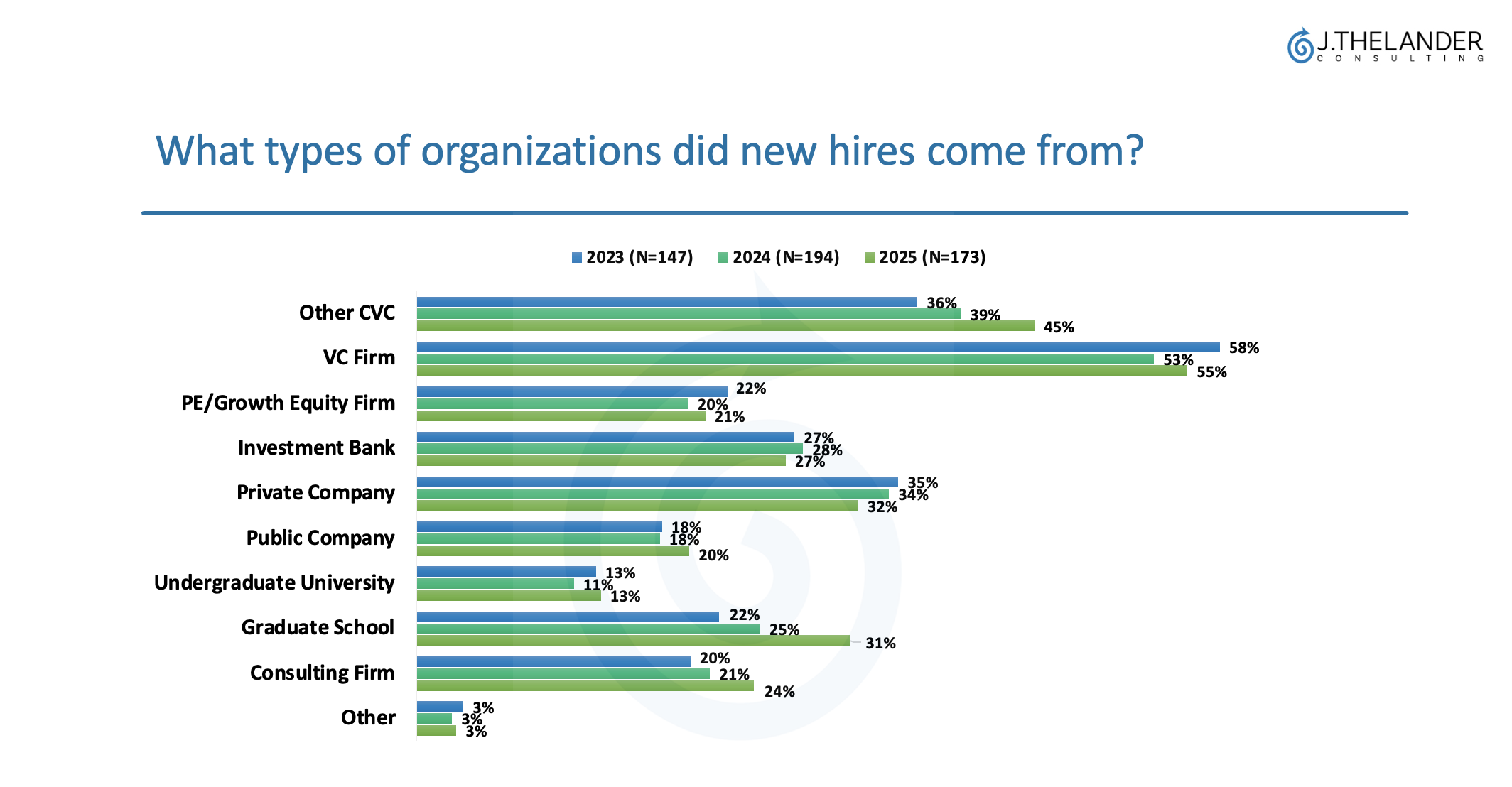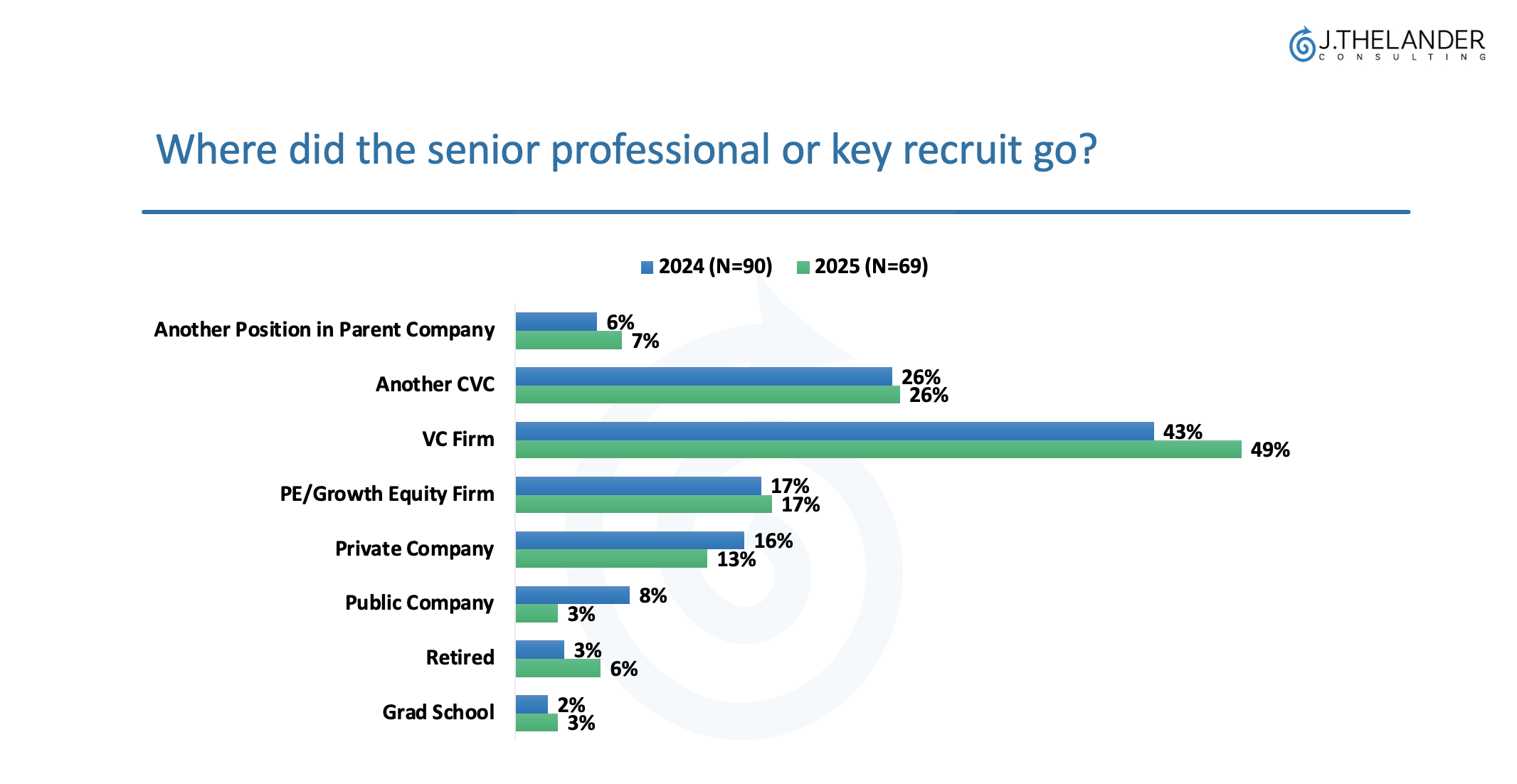Thelander CVC Digest: June 2025
Where Is CVC Talent Coming From?
Thelander’s compensation offerings encompasses more than data on salaries and long term incentives. Our robust platform also reveals where and how people move within and across organizations, a crucial component when it comes to CVCs building an experienced, innovative and elite team.
When a founding partner of GSK’s corporate venture arm, Action Potential Venture Capital, left his position to become CFO at one of their CVC Unit’s portfolio companies, the Thelander team started thinking analyzing trends in CVC hiring.
Notably: What types of organizations are new hires at CVC firms coming from? And what does compensation look like as they change positions? Let’s dig in.
Corporate VC Hiring Trends Favor Experiences Inside the CVC World
The majority of new hires (56%) still come venture capital firms, as indicated by the chart below. But an increasing number of new hires in 2025 came from other CVC units.
“Hiring managers appreciate that CVC experience is very valuable,” said Jody Thelander, founder & CEO of the namesake firm. “Venture capital firms and CVCs can operate differently with varying priorities (financial return versus technology transfer). This can also impact the talent they recruit and the skills needed to support the firm and the portfolio companies.”
- 45% of new CVC hires came from other CVC unit’s, a 6% increase from 39% in 2024.
- The number of employees joining firms directly from graduate school is up 9% from 22% in 2023 to 31% in 2025.
- VC firms, other CVC units and private companies are the top three sources for new hires in 2025.

Source: Thelander CVC Overview Report via the CVC Compensation Survey
Where Are CVC Employees Going?
Likewise, CVC professionals bring value to other organizations. As CVC units continue to be major players in the investment firm ecosystem, there’s been a competitive shift in attracting and retaining talent with CVC experience. Nearly half (49%) of CVC senior professionals or key employees who leave go on to venture capital firms, a 6% increase since last year.
Meanwhile, the number of CVCs professionals or key recruiters leaving to join public or private companies is down. Just 16% in total, still leave to join public or private companies, possibly suggesting that leaders join companies they’ve supported.
- VC firms, like other CVCs, and PE/Growth Equity Firms are the top three places key recruits go when they leave a CVC unit, representing more than 90% of all job changes.
- More than one-quarter (26%) of CVC senior leaders move on to a different CVC unit.

Source: Thelander CVC Overview Report via the CVC Compensation Survey
The Bottom Line
These charts who how CVC employees have a range of career opportunities. “CVC talent brings a depth and breadth of experience that is valuable across the private capital market and there is a lot of demand for their skill set, which makes them attractive candidates,” Thelander said. “There is always a premium for people who have key skills ranging from investing to business development and portfolio company services.”
Access Compensation Data for the Global Private Capital Market By Participating Here
Tags: CVC, Newsletter